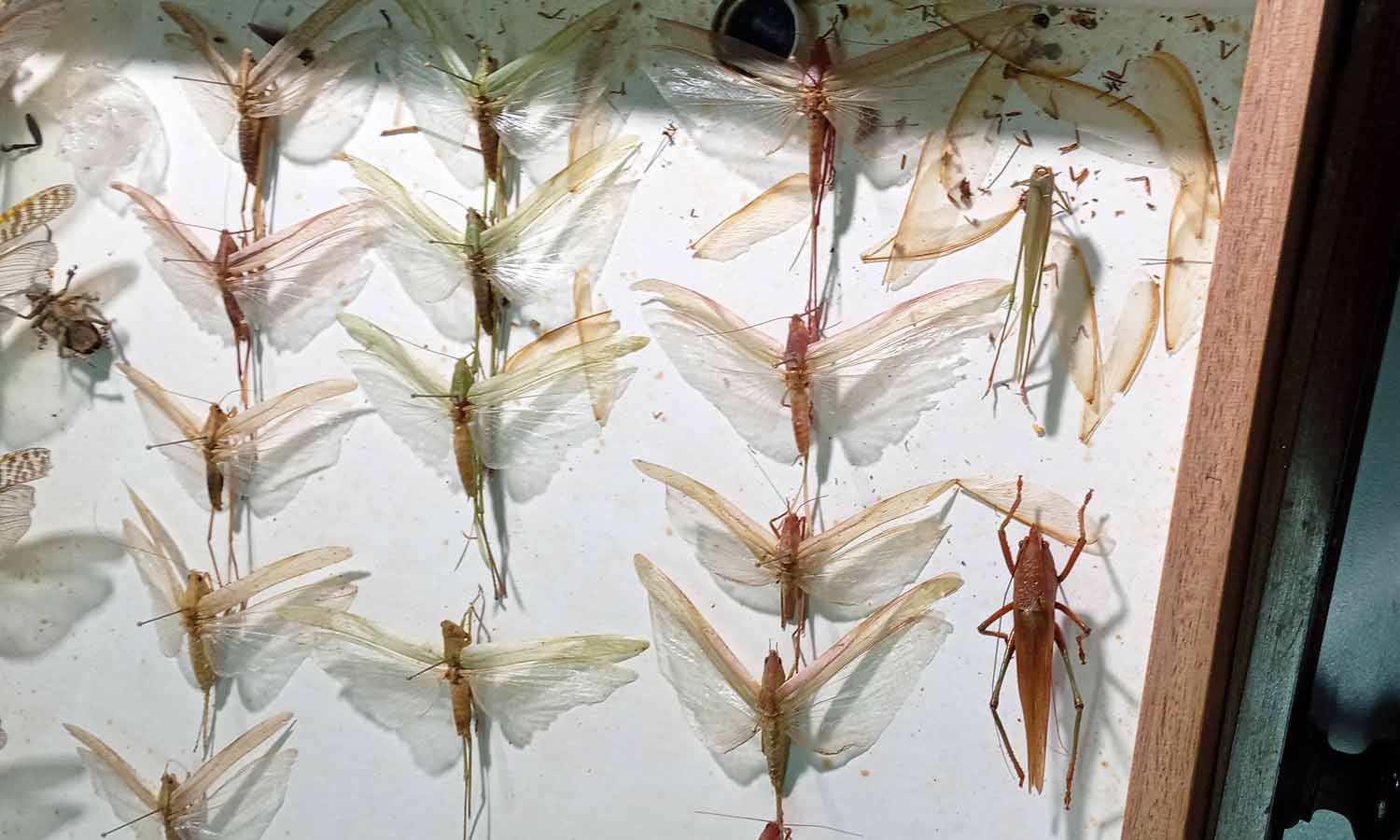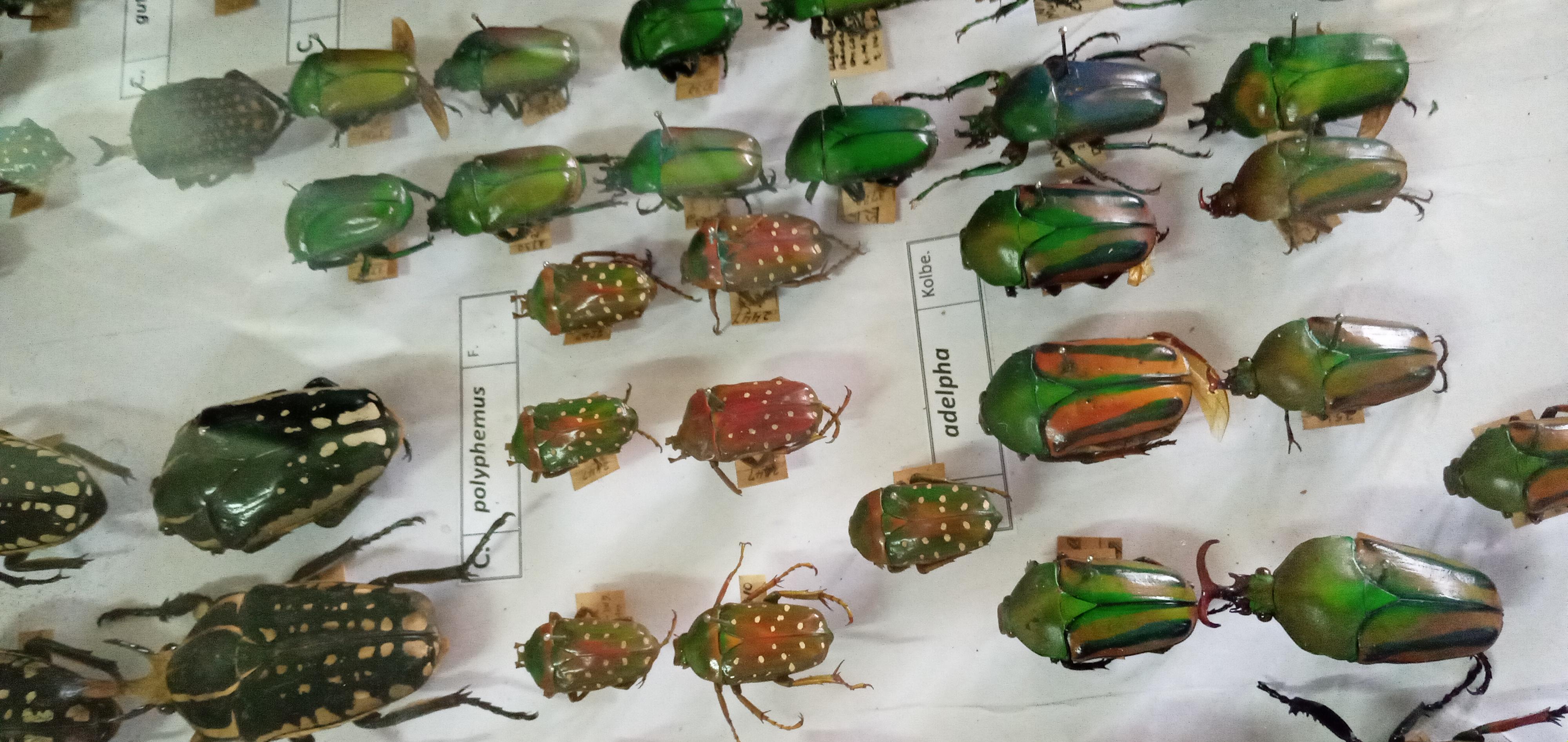Prime
Why pollinators are vital to farmers

Some of the insect pollinators of display at National Agriculture Research Laboratories (NaRL). Photo/Lominda Afedraru.
What you need to know:
- General awareness about conserving insect pollinators is low yet wild pollinators provide about 85 percent of the global pollination services.
Globally, the diversity of pollinators has been declining rapidly over the years, particularly in agricultural landscapes.
Apparently, .
This is the thinking of agricultural scientists in as far as the importance of conserving insect pollinators in the wild as an answer to increasing farmer yields.
Background
In recent research paper by scientists from department of Biology, Natural Sciences University of Busitema about pollinator biodiversity in Uganda and in Sub Sahara Africa:
Landscape and habitat management strategies for its conservation, it is highlighted that farmlands in different parts of the country harbour different pollinator species.
The experts explain pollination as key ecosystem function that is insect critically derived.
It is a basis for the maintenance of biodiversity in agricultural and natural landscapes.
An estimated 60 to 80 percent of wild plants and 35 percent of global crop production depends on animal pollination.
At least 450 crop species globally depend on pollination by bees. Crop species that depend on the assistance of bees for their existence also provide 35 percent of the calories consumed by humans each year and provide most of the vitamins, minerals and antioxidants.
The ecological, agricultural and economic importance of pollinators is immense and yet enormous. The value of pollination to agricultural production worldwide is currently estimated to be worth $226b per year or approximately 39 percent of the world crop production value from the total value of 46 insect pollinated direct crop species.
In a recent pollinator surveys conducted in 26 different sites in the country, it is indicated that farmlands of central Uganda support more than 650 bee species, 330 butterfly species and 57 other fly species. Most crop species grown in Uganda are pollinator-dependents. There is also a high dependency of rural communities on pollination services for their livelihoods and incomes. The annual economic value attributable to pollinating services delivered to crop production sector is estimated to be worth of $0.49b for a total economic value of crop production of $1.16b in Uganda.
Despite the great contribution of pollinators to crop yields, there is still lack of knowledge of their conservation strategies in Uganda.
In a publication Farm Together where experts are highlighting the role of pollinators in agriculture, the details as below;
What are pollinators?
Experts define pollinators as living insects, humans, animals, and birds among others that transport pollen from the male parts of the plants to the female ones to ensure the formation of fruits and seeds.
However due to chemical agro inputs that are being currently used, the population especially of insects is decreasing. It is amazing the amount and diversity of pollinators that exist are numerous with experts estimating it to be about 20,000 species pollinators namely bees, bats, moths, flies, wasps, beetles and butterflies and to a lesser extent, monkeys, birds and squirrels among others.
Importance of pollinators
The experts explain that there is a small proportion of insects which are responsible for pollinating plants namely which include cereal crops such as maize sorghum, rice, leguminous crops such as groundnuts, beans, soybeans and simsim among others.
Others are various species of fruit plants such as mangoes, avocado, oranges, and all vegetable species that produce seed.
This means without the pollinators the human food system would look differently without the ecosystem which harbours the pollinator species.
From bees to bats, farmers depend on a diverse array of pollinators in order to realise yields of various crop species that provide for food security, nutrition and in income earning. Farmland investing relies on the work pollinators do behind the scenes and most of the crops farmers are engaged in growing require insects and small animals for successful crop yields and sustainable returns.
In recent decades, pollinator numbers have taken a downturn as a result of habitat loss, climate change and exposure to chemicals.
Experts suggest regenerative farming practices could ultimately support pollinator habitat restoration and has the potential to begin reversing the decline.
Regenerative farming practices offer a safe harbor for the small animals and insects that are responsible for crop production across the world.
What crops need pollinators?
Pollination occurs through the action of either insects or small animal which feed on the nectar in the flowers and transfer pollen among the plants they visit.
It can also occur through the action of the wind dispersing pollen between plants. Common grain crops such as wheat, rice, barley and maize are examples of plants that utilise the wind for pollination.
Most leguminous crops and fruits plus vegetables that produce seed on the other hand, cannot depend on wind for successful fertilisation. The pollen must be transferred by the pollinator through physical action.
Types of pollinators
Bees are the most famous pollinator species but there are many that get far less publicity for their crucial work. There are insects such as moths, flies, wasps, beetles and butterflies are on the list of pollinating crops for successful crop yields.
There are even many vertebrate pollinators including bats and other mammals such as some species of monkeys, rodents, humans and tree squirrels.
A handful of birds such as hummingbirds, sunbirds and few parrot species including monkeys are on the list as well. Each of these pollinator species contribute to their own unique niche in the food system and rely on different plants for survival, making it crucial that we support pollinators by growing a diverse array of plant species to accommodate pollinator needs.
The abundance and diversity of pollinators ensure the resiliency of plant communities.
Strong plant and pollinator communities lead to better food security and nutrition.
Pollinators and regenerative agriculture
The recent decline in pollinator numbers has led to extensive research and development of mechanical pollination solutions such as pollinator drones.
While these new developments in technology have promise, the cost of producing and using new methods of pollination are cost prohibitive. The cost barriers to engineered solutions for the loss in pollinator numbers has sparked renewed interest in farming practices, known as regenerative farming, that nurture wild pollinators.
Regenerative farming has the potential to build resilient farm systems by restoring biodiversity to the landscape.
Adding biodiversity to the food production system provides habitat for the many different species of pollinators that all contribute to their niche in the food system.
Concerns
Experts from Food and Agriculture Organisation (FAO) last year while discussing the importance of pollinators for the world’s food production came out with a resolution that the onus of protecting pollinators relies on everyone, ranging from policy makers, farmers, consumers and politicians among others.
The experts recommend all players to advocate for the intensification of the Ecological through conservation agriculture practices.
Farmers are advised to practice agro forestry farming where they can grow both crops and trees to provide forest cover for the pollinator insects.




